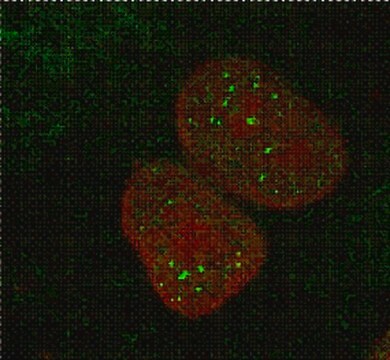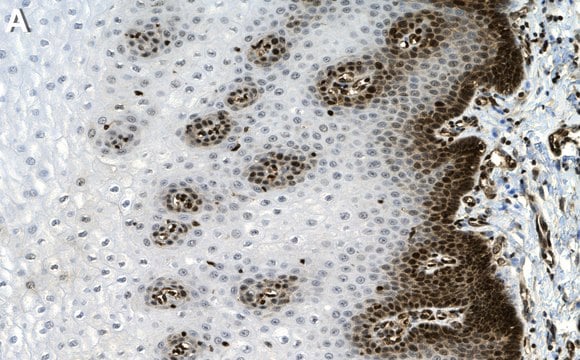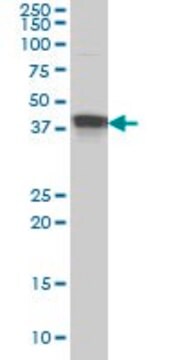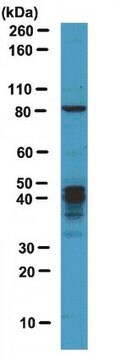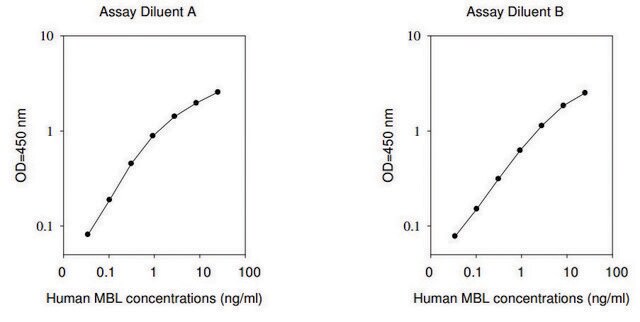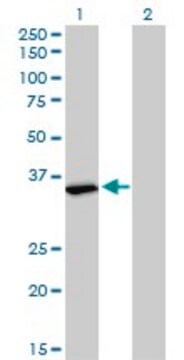Key Documents
M3320
Monoclonal Anti-MBNL1 antibody produced in mouse
~1 mg/mL, clone HL 1822 (3A4-1E9), purified immunoglobulin, buffered aqueous solution
Synonim(y):
Anti-CUG Triplet Repeat Expansion Double-stranded RNA-binding protein, Anti-EXP, Anti-KIAA0428, Anti-Muscleblind-like protein, Anti-Triplet-expansion RNA-binding protein
About This Item
Polecane produkty
pochodzenie biologiczne
mouse
Poziom jakości
białko sprzężone
unconjugated
forma przeciwciała
purified immunoglobulin
rodzaj przeciwciała
primary antibodies
klon
HL 1822 (3A4-1E9), monoclonal
Postać
buffered aqueous solution
masa cząsteczkowa
antigen ~42 kDa
reaktywność gatunkowa
monkey, mouse, human
stężenie
~1 mg/mL
metody
immunocytochemistry: suitable
immunohistochemistry: suitable
microarray: suitable
western blot: 0.2-0.5 μg/mL using HeLa nuclear cell extract
izotyp
IgG1
numer dostępu UniProt
Warunki transportu
dry ice
temp. przechowywania
−20°C
docelowa modyfikacja potranslacyjna
unmodified
informacje o genach
human ... MBNL1(4154)
mouse ... Mbnl1(56758)
Opis ogólny
Immunogen
Zastosowanie
Działania biochem./fizjol.
Postać fizyczna
Oświadczenie o zrzeczeniu się odpowiedzialności
Nie możesz znaleźć właściwego produktu?
Wypróbuj nasz Narzędzie selektora produktów.
Kod klasy składowania
10 - Combustible liquids
Klasa zagrożenia wodnego (WGK)
WGK 3
Temperatura zapłonu (°F)
Not applicable
Temperatura zapłonu (°C)
Not applicable
Środki ochrony indywidualnej
Eyeshields, Gloves, multi-purpose combination respirator cartridge (US)
Certyfikaty analizy (CoA)
Poszukaj Certyfikaty analizy (CoA), wpisując numer partii/serii produktów. Numery serii i partii można znaleźć na etykiecie produktu po słowach „seria” lub „partia”.
Masz już ten produkt?
Dokumenty związane z niedawno zakupionymi produktami zostały zamieszczone w Bibliotece dokumentów.
Nasz zespół naukowców ma doświadczenie we wszystkich obszarach badań, w tym w naukach przyrodniczych, materiałoznawstwie, syntezie chemicznej, chromatografii, analityce i wielu innych dziedzinach.
Skontaktuj się z zespołem ds. pomocy technicznej